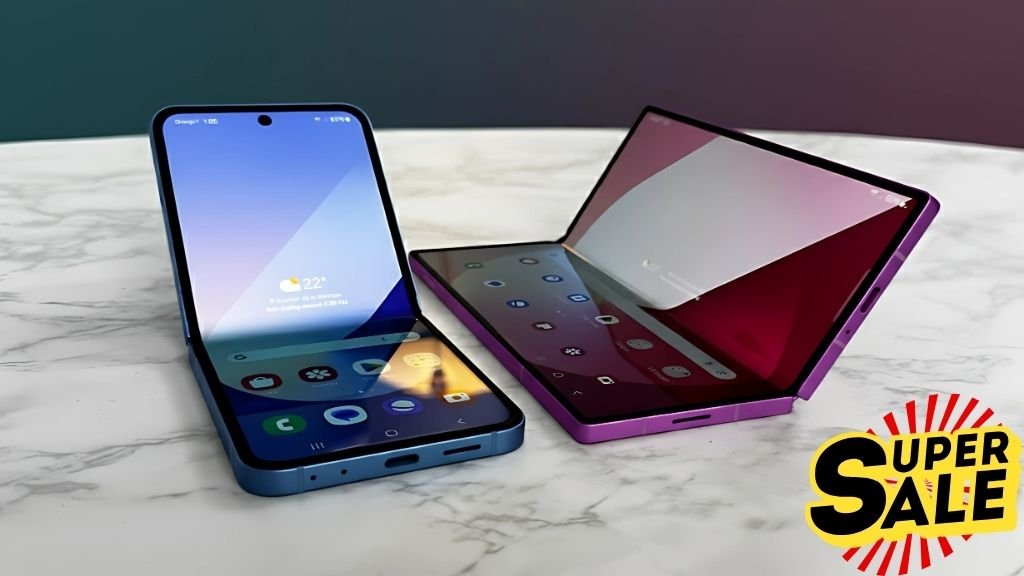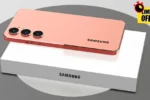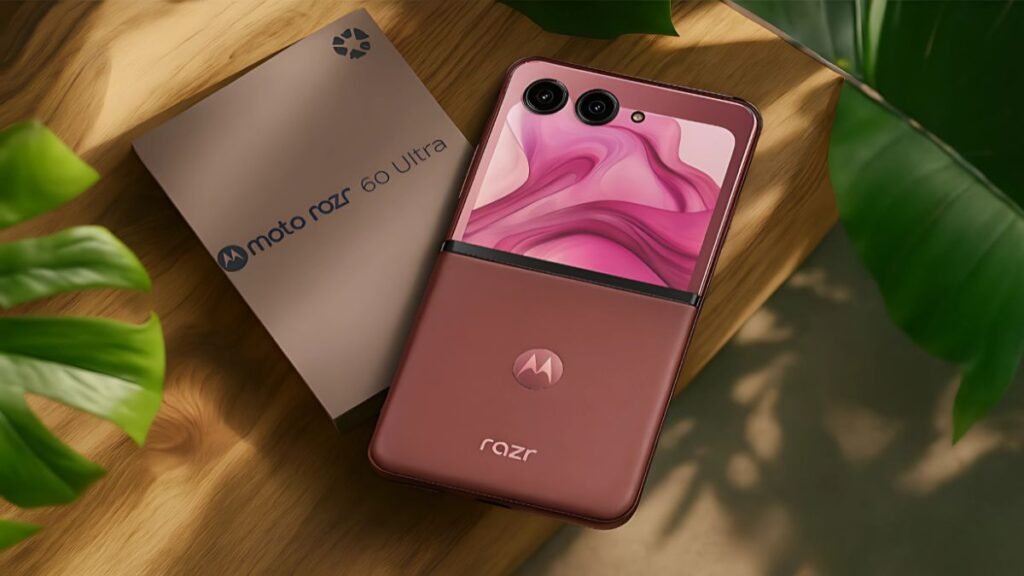Samsung Galaxy Z Fold 7 Launched: We’ve been waiting for a foldable that feels like a no-compromise daily driver—sleeker in the pocket, brighter in the sun, smarter in the moments that matter. The Samsung Galaxy Z Fold 7 shows up to do exactly that. Bigger canvases inside and out, a lighter and thinner chassis, a massively upgraded 200MP camera, and a matured One UI 8 with Galaxy AI—this is a foldable engineered to disappear into your routine and reappear when the job (or the fun) demands more space. In this deep, practical guide, we unpack everything that matters: design, displays, cameras, battery life, AI features, value, and who should actually buy it.
Launch Snapshot: Dates, Models, Colors, and What You’ll Pay
Samsung unveiled the Galaxy Z Fold 7 at Galaxy Unpacked 2025 on July 9, 2025, with preorders starting the same day and general availability from July 25 in key markets. At launch, Samsung positioned the Fold 7 at the premium end of the lineup; in the U.S., the official MSRP sits in the upper flagship bracket, with carrier financing widely available. Colorways include Blue Shadow, Silver Shadow, Jetblack, and an online-exclusive Mint, while storage tiers span 256GB, 512GB, and 1TB depending on region. If you’re hunting deals, watch pre-order trade-ins and carrier credits; early demand has already nudged production upward, a sign this iteration resonates beyond early adopters.
Design & Build: Thinner, Lighter, More Confident in Hand
The Fold 7’s first impression is tactile: a flatter, boxier silhouette that slips more neatly into pockets, tighter tolerances that nix creaks, and a camera bar sculpted to reduce desk wobble. Official numbers tell the story—~8.9 mm folded, ~4.2 mm unfolded, ~215 g—and those grams and millimeters matter when you’re thumb-typing on the cover screen or holding an eight-inch canvas at eye level. Materials and fit feel premium without being ostentatious, and the hinge action—redesigned and stiffer—lets you set angles precisely for top-down cooking videos, desk-mode calls, or time-lapses. It’s a maturity jump you sense in the first five minutes: the phone feels purpose-built, not experimental.
Displays: 6.5″ Outside, 8.0″ Inside, With Adaptive 1–120 Hz Smoothness
The Fold 7’s cover screen grows to 6.5″ with a 21:9 ratio that finally types like a bar-phone. Open it up and you get a roomier 8.0″ Dynamic AMOLED 2X main display. Both panels support Adaptive 1–120 Hz and reach up to ~2600 nits peak brightness, so noon-sun maps and photos are legible without squinting, and bedtime reading doesn’t “flashbang” your eyes. The practical win is flow: you can triage most tasks on the outer screen—quick replies, payments, navigation—and only open when you want the canvas for split-screen research, editing, or a full-bleed movie. It feels like Samsung’s most balanced Fold UI yet; you stop managing the display and start trusting it.
Performance & Silicon: Snapdragon 8 Elite for Galaxy + One UI 8 Polish
On paper, the Fold 7 runs a Snapdragon 8 Elite for Galaxy tuned for AI throughput and efficiency; in hand, that translates to perceptual speed—the sense that the device is waiting on you. App launches, camera-to-editor-to-share flows, and long multi-hour navigation runs stay steady, with fewer heat-spike slowdowns. Paired with ample RAM and UFS storage options up to 1 TB, it handles split-screen plus floating windows without forcing reloads. Benchmarks matter less here than sustained performance; the Fold 7’s thermal behavior is calmer than earlier generations, especially when juggling maps, music, messaging, and a camera session back-to-back.
Galaxy AI on a Bigger Canvas: Help That Actually Saves Taps
One UI 8 leans into Galaxy AI in ways that fit the foldable form. Summarize long threads, translate on the fly, or let the phone prep key talking points before a call—right next to your email on the other half of the screen. Live, contextual help and a cleaner taskbar make split-screen feel native rather than clever. The Fold 7’s layout turns AI from a parlor trick into a time-saver: draft a note while reading a doc, clip an image with the S-like toolset, or drag content directly between apps. It’s the first Fold where software feels calmer as the screen gets bigger.
Main Cameras: 200 MP “Ultra” Sensor Steps In (Plus Useful Ultra-Wide & Tele)
For years, Samsung held back Fold cameras versus the S-Ultra line. Not this time. The Fold 7 inherits a 200 MP wide-angle main camera and keeps a practical trio with ultra-wide and 3× telephoto on the back, plus a cover selfie and an under-display inner-screen camera for video calls. The upgrade is visible: daylight shots preserve fabric texture and skin micro-contrast; HDR rolls highlights more naturally; zoomed photos hold detail further into the “usable” range before computational smoothing steps in. If you shoot a lot of portraits at dusk or document whiteboards, the 200 MP sensor gives you room to crop without the watercolor penalty older Folds suffered.
Video & Audio: Walk-and-Talks Without the Wobble
A stiffer hinge and chassis, improved stabilization, and better mic tuning all show up in walk-and-talks. Expect fewer micro-jitters during pans, cleaner voice separation in street noise, and more consistent focus pulls from subject to subject. For creators, the real joy is how quickly the Fold 7 converts into a mini-rig: set it in tent mode for top-down shots, use the outer screen as a preview for rear-camera selfies, and drop a quick edit side-by-side with your clip on the inner panel. You carry less, you set up faster, and you get more keepers on the first take.
Battery & Charging: Same Capacity, Better Endurance
Samsung keeps the 4,400 mAh dual-cell capacity and long playback claims—but software tuning and a cooler SoC make that number feel more realistic in mixed days. Charging specs remain familiar: 25 W wired, 15 W wireless, and reverse wireless for accessories. Is it class-leading? No. Is it dependable? Absolutely. Quick top-ups during a coffee add meaningful hours, and adaptive refresh + standby smarts trim idle drain. If you’re coming from a Fold 4/5/6, the endurance delta is noticeable even with unchanged milliamp-hours.
Durability & IP Rating: What IP48 Actually Means
Foldables have always danced around dust. The Fold 7 is rated IP48, which indicates solid particle protection (the “4”) and high-level water resistance (the “8”). You can take confidence in rain, splashes, and day-to-day grit, but it’s not a license for beach-sand abuse—blowing out hinge gaps and using a case with better lip coverage still makes sense. Compared with older Z Folds (IPX8 only), the added dust rating is a practical step forward.
Dimensions & Weight: Numbers You Feel All Day
Specs are only half the story, but ~215 g and ~8.9 mm folded/~4.2 mm unfolded are the magic figures that change your grip, pockets, and fatigue. On commutes, the lighter weight means fewer hand cramps when doom-scrolling on the cover screen; on the couch, the thinner profile keeps the unfolded slate from feeling like a tray. The Fold 7 finally crosses the threshold where a “book” phone feels less like a novelty and more like a believable primary phone for smaller hands. Once you adapt to the 21:9 outer ratio, you’ll wonder why it took so long.
Multitasking & Productivity: Split-Screen That Feels Intentional
Two big things happen when you open the Fold 7: a smarter taskbar and more forgiving drag-and-drop. Email ↔ docs, chat ↔ maps, notes ↔ browser—it’s finally easy to pair, resize, and settle into a layout that sticks between sessions. The gestures are tidier, too; getting app pairs into place doesn’t require a tutorial. Creators and students benefit most: viewing a PDF outline while drafting, or rough-cutting a clip while reviewing notes, is the kind of “just enough” desktop experience that makes a real dent in your laptop time.
Connectivity, SIM, and Network Notes
The Fold 7 supports broad 5G coverage (sub-6 and, in some SKUs, mmWave), Wi-Fi 6E/7, Bluetooth 5.x, NFC, and the usual location stacks. It keeps eSIM support and, in many regions, a physical SIM tray, which helps frequent travelers and BYOD users who juggle work and personal lines. Carrier stores and Samsung’s online storefront offer straightforward monthly financing; unlocked models include a SIM tool and USB-C cable in the box. It’s the practical stuff that smooths setup day.
Fold 7 vs Fold 6: Where You’ll Notice the Upgrade
If you’re holding a Fold 6, here’s the delta: a larger 8.0″ main and 6.5″ cover (from 7.6″/6.3″), a lighter/thinner body, a 200 MP main camera (versus 50 MP), a redesigned hinge feel, and a cleaner One UI 8 tailored to the wider ratio. Brightness ticks up on both panels, and battery life benefits from tuning even at the same 4,400 mAh. Charging speeds don’t budge, but day-to-day endurance and camera consistency do. If you shoot, read, or edit a lot, you’ll feel it.
Fold 7 vs The Field: Why Samsung Still Sets the Bar (and Where Others Nudge Ahead)
Rivals push faster charging, bigger batteries, or extreme brightness. Samsung counters with mass availability, update cadence, a balanced weight/thickness, and polished software that makes the folding canvas feel normal, not precious. Hardware die-hards might prefer competitors with 5,000 mAh cells and 66–100 W bricks; travelers and creators may pick Samsung for the ecosystem, camera reliability, and widespread retail support. The short version: the Fold 7 is the safest all-around bet; some rivals win spec duels, but few feel as complete.





